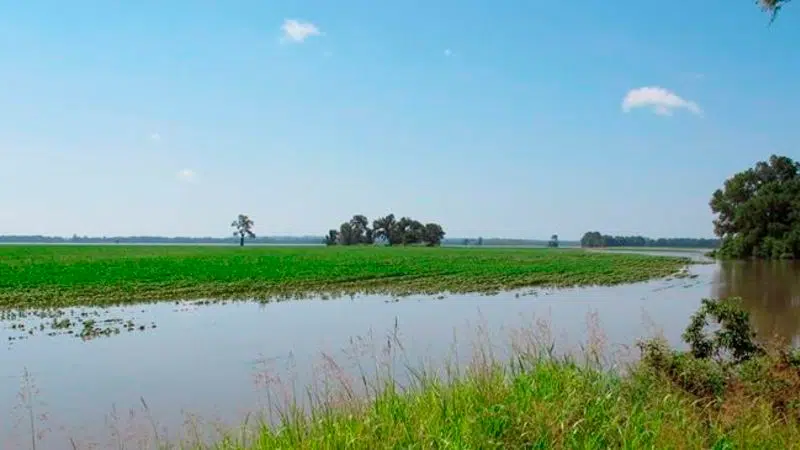
River flooding in Tennessee ruins cotton, soybean crops
RIPLEY, Tenn. — Wearing wading boots and a wide-brimmed hat, Derrick Currie casts his green fishing line into a pool of brown water along a rural Tennessee road.
In a couple of minutes, he reels in his flapping bounty: A nice-sized catfish that he puts in a cooler to take home.
Currie’s fishing hole looks like a lake, but it isn’t one. It’s farmland inundated by floodwater.
Lush green fields of cotton and soybeans turned into lakes Tuesday as flooding from the overfull Mississippi River covered thousands of acres of farmland in Lauderdale County in west Tennessee.

